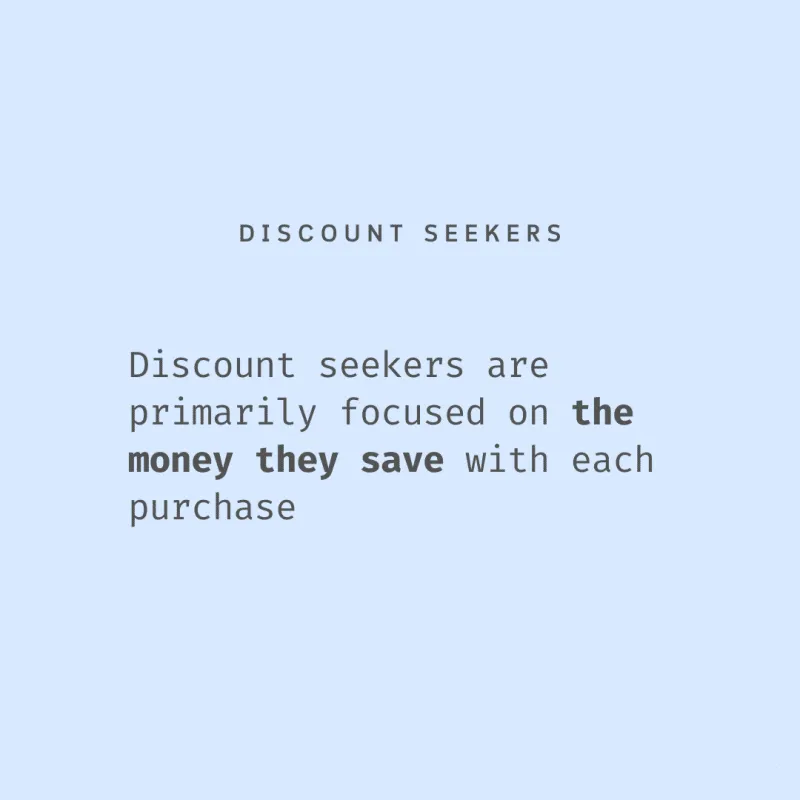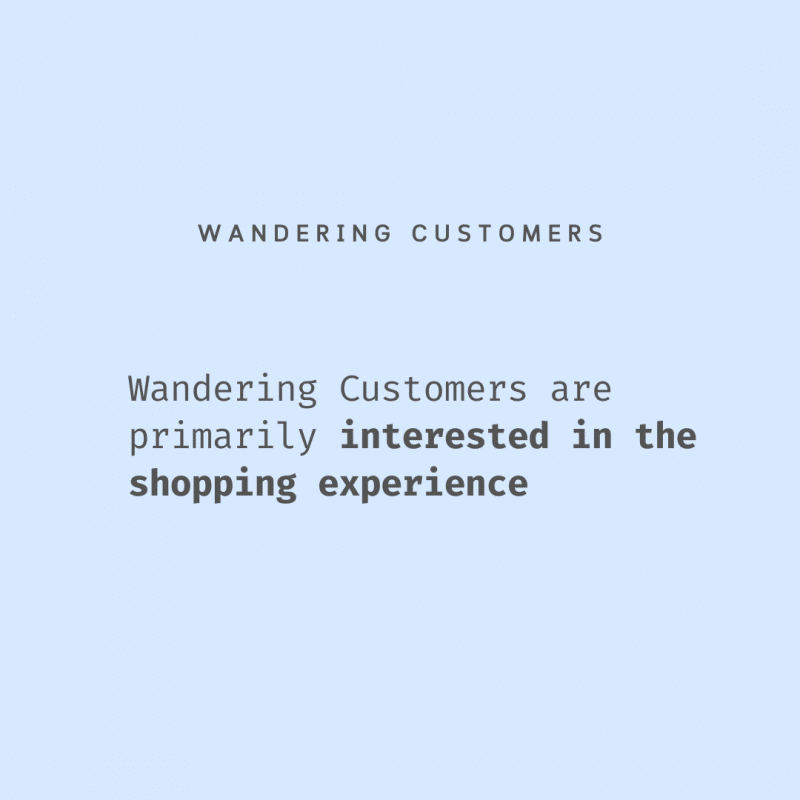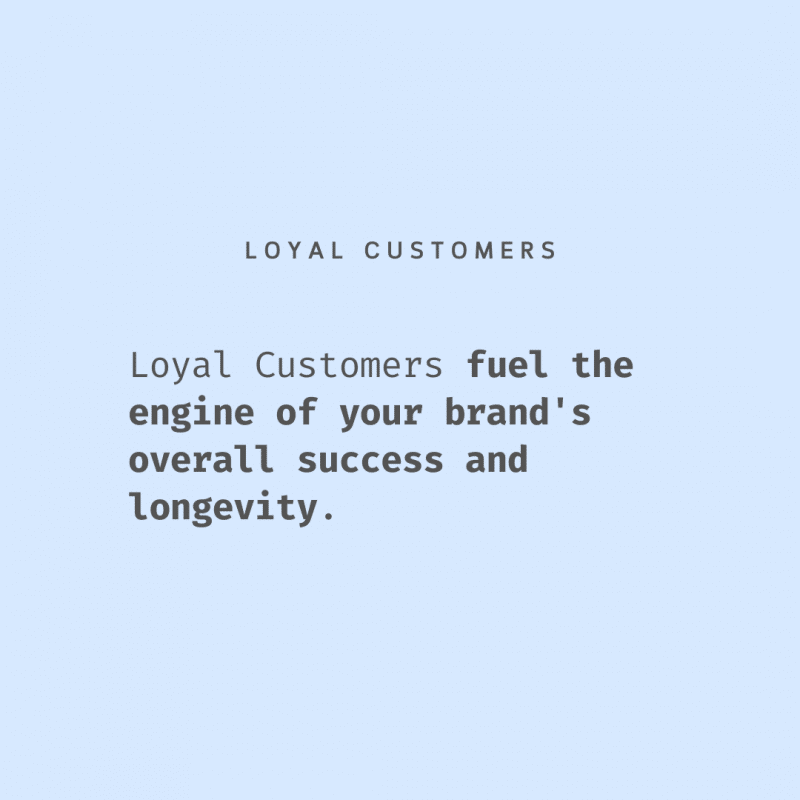Understanding the different types of online shoppers is key to tailoring marketing strategies, improving customer experience, and increasing conversions. Not all shoppers behave the same way, and using a one-size-fits-all approach can lead to missed opportunities.
Here are the five main types of online shoppers and how to convert them
- Discount Seekers – Attracted by deals and promotions; engage them with limited-time offers, loyalty rewards, and exclusive discounts.
- Wandering Customers – Browse without intent; capture their interest through personalized recommendations and engaging content.
- Impulse Buyers – Make quick decisions; optimize for them with flash sales, urgency-driven messaging, and seamless checkout processes.
- Need-Based Shoppers – Have a specific product in mind; provide detailed product information, clear navigation, and strong search functionality.
- Loyal Customers – Your most valuable shoppers; reward them with VIP programs, personalized offers, and excellent customer service.
With businesses losing over $75 billion annually due to poor customer service, prioritizing customer satisfaction, tailored experiences, and loyalty programs can significantly boost retention and revenue. By segmenting shoppers and aligning marketing efforts with their behaviors, businesses can optimize their sales funnel and drive higher conversions.
5 Types of Online Shoppers
Discount seekers
Discount seekers, also known as bargain hunters, focus primarily on finding the lowest prices and they bring the lowest value to your store. They represent about 67% of online customers and are highly price-sensitive. These shoppers prioritize saving money over product quality or customer service. For example, a shopper looking for the best Black Friday deals fits this category.

Key Traits:
- Highly price-sensitive
- Prioritize discounts and deals
- Use price comparison tools
How to Convert:
To convert discount seekers, emphasize value and savings while ensuring competitive offers.
- Exclusive Discounts: Offer flash sales, holiday discounts, or member-only deals.
- Value Emphasis: Highlight the benefits and value in product descriptions.
- Price Match Guarantees: Assure them they are getting the best deal.
- Social Media Campaigns: Showcase best-sellers with special discounts.
- Email Marketing: Send newsletters with exclusive discount codes.
- Loyalty Programs: Reward frequent purchases with discounts or redeemable points.
While discount seekers may not become loyal customers, redirecting their attention from price to value can encourage repeat purchases.
Wandering customers
Wandering customers bring significant traffic but low value. They enjoy the shopping experience, such as checking out the latest items, adding products to their wishlist, and comparing prices and offers. There is no urgency or specific need, making them difficult to convert. For them, online shopping is often a leisure activity or hobby.

Key Traits:
- Bring high website traffic
- Interested in the shopping experience
- Lack urgency or specific purchase intent
How to Convert:
Since wandering customers are there for the shopping experience, converting them will be rather tricky.
- Provide Space: Avoid overwhelming them with scarcity pop-ups or aggressive upselling. Give them the freedom to explore your site without pressure.
- Streamline Experience: Ensure a straightforward shopping experience with quick-loading pages, intuitive navigation, and a simple checkout process. Remove any unnecessary steps that could frustrate them.
- Wishlist and Notifications: Encourage them to add items to their wishlist and set up notifications for price drops, sales, or restocks. This keeps your products in their mind without being intrusive.
- Email Campaigns: Send follow-up emails with personalized product recommendations and gentle reminders about items left in their wishlist. Include engaging content and special offers to entice them back to your site.
However, you don’t need to invest too many resources into converting wandering customers. Since they’re just there for the experience, these customers will unlikely commit to purchasing something. Of course, you can run experiments and provide personalized experiences – but don’t count on wandering customers to increase your revenue anytime soon.
Impulse buyers
Impulse buyers, much like wandering shoppers, don’t purchase out of urgent need and are highly volatile. Their decisions are driven by the latest trends and social norms, making them unpredictable. The industries that need to concentrate on these shoppers include fast-paced industries like fashion, tech, and beauty. Impulse buyers often switch brands in search of the latest products and enjoy showcasing their purchases to peers, seeking social status through consumerism.

Key Traits:
- Highly influenced by trends
- Make spontaneous purchases
- Volatile and brand-switching
- Seek social status through purchases
How to Convert:
Converting impulse buyers requires keeping up with trends and providing a seamless shopping experience.
- Stay Trendy: Ensure you always have the latest and hottest products in stock.
- Frictionless Experience: Create an efficient and personalized shopping experience with quick-loading pages and simple navigation.
- Visible Deals: Highlight your best deals and make them easily visible through design elements.
- Flexible Options: Offer various shipping and payment options to meet their immediate purchasing needs.
- Reassurance: Soothe their concerns about delivery times and stock availability with clear information.
- Post-Purchase Engagement: After a purchase, place them in a nurturing email flow to inform them about new products and encourage repeat purchases.
- Upselling and Cross-Selling: Implement strategies that push complementary or commonly paired products, as this segment is most likely to respond positively.
By focusing on the latest trends, ensuring a frictionless shopping experience, and engaging them post-purchase, you can effectively convert impulse buyers and encourage frequent buying behavior.
Need-based shoppers
Need-based customers aren’t quick to make buying decisions but form strong connections with brands. They thoroughly research products, competition, and offers before purchasing to ensure they are making the best decision. They seek products that deliver on their promises and address specific needs, rather than the latest gadgets or deals. Think real estate: if you want to buy a home, you’re not buying the first apartment you’ll visit, right?

Key Traits:
- Thorough researchers
- Value product reliability and quality
- Patient and deliberate decision-makers
How to Convert:
Need-based shoppers require detailed information and reassurance about their purchase. Here’s how to convert them:
- Comprehensive Information: Provide detailed product descriptions, buyer guides, and FAQs to answer all potential questions.
- Trust Building: Offer plenty of product reviews and testimonials to build credibility and trust.
- Free Value: Invest in creating valuable content like articles, webinars, and how-to guides that address their specific needs and concerns.
- Personalized Experience: Tailor the shopping experience to their research habits by offering comparison tools and detailed specifications.
- Excellent Customer Support: Ensure responsive and knowledgeable customer service to assist with any queries.
Need-based customers reach your website hoping to find a solution to their problem because they crave the outcome of using your products or want a better, more accessible, more prosperous life.
Loyal customers
Loyal customers are the backbone of your brand’s success and longevity. They help businesses sustain growth by reducing the need for constant new customer acquisition. Retaining loyal customers ensures steady revenue and long-term stability.

Key Traits:
- High brand loyalty
- Provide repeat business
- Expect exceptional service
How to Convert:
Focus on retaining loyal customers by providing exceptional experiences. They are already loyal and involved with your brand. However, 86% of consumers will leave a brand after a bad experience.
- VIP Experience: Prioritize customer support and offer a VIP experience.
- Early Access: You can consider providing early access to new products, offers, or events.
- Special Occasions: Surprise them with gifts on birthdays or anniversaries.
- Personalized Communication: Maintain personalized communication to show appreciation.
By focusing on these strategies, you can retain your loyal customers and ensure their continued support, which is essential for long-term business success.
Like what you're reading?
Join the informed eCommerce crowd!
We will never bug you with irrelevant info.
By clicking the Button, you confirm that you agree with our Terms and Conditions.
How to Engage All Types of Online Shoppers
Engaging a diverse range of online customers requires a multifaceted approach that caters to varying preferences, behaviors, and needs. Here are some detailed strategies to effectively engage different types of shoppers:
Personalization
Use data analytics and AI to create a personalized shopping experience. By analyzing browsing history, past purchases, and search queries, you can offer personalized product recommendations, targeted ads, and customized email campaigns. This approach makes shoppers feel valued and understood, increasing their likelihood of making a purchase.
Implement dynamic content on your website that changes based on the user’s behavior and preferences. This could include personalized homepage banners, product suggestions, and even personalized pricing offers.
User-Friendly Website
Design a website that is easy to navigate with a clear and intuitive layout. Categories should be well-organized, and a robust search function should be available to help users find what they need quickly.
Ensure your website is fully optimized for mobile devices. Many shoppers use their smartphones to browse and make purchases, so a mobile-friendly site is crucial for a seamless shopping experience.
Improve your website’s loading speed. Slow-loading pages can frustrate users and increase bounce rates. Optimize images, use efficient coding practices, and consider a content delivery network (CDN) to speed up load times.
High-Quality Content
Provide comprehensive product descriptions that include specifications, features, benefits, and use cases. High-quality descriptions help shoppers make informed decisions.
Use high-resolution images and product videos from multiple angles. Visual content is crucial in helping shoppers understand what they are buying and can significantly impact their purchase decision.
Encourage customers to leave reviews and ratings. Displaying these prominently on product pages builds trust and provides social proof.
Customer Support
Offer customer support through various channels such as live chat, email, and phone. Ensure that support is readily available and responsive to customer queries and issues.
Create a comprehensive knowledge base with FAQs, guides, and tutorials. This helps customers find answers to common questions and issues on their own.
Implement chatbots to provide instant assistance and answer common questions. Chatbots can handle basic queries, freeing up human agents for more complex issues.
Social Proof
Display customer testimonials prominently on your site. Positive feedback from other customers can influence new shoppers and build trust.
Encourage customers to share their experiences on social media and feature this content on your website. User-generated content adds authenticity and can inspire confidence in potential buyers.
Loyalty Programs
Create loyalty programs that reward repeat purchases with points, discounts, or exclusive offers. These programs incentivize customers to return and build long-term loyalty.
Offer exclusive perks such as early access to sales, special discounts, and members-only events. These benefits make loyal customers feel valued and appreciated.
Efficient Checkout Process
Minimize the steps required to complete a purchase. A streamlined checkout process reduces friction and cart abandonment rates.
Provide an option for guest checkout without requiring account creation. This can speed up the purchase process for new customers.
Use auto-fill features to make it easier for returning customers to enter their information quickly.
Wrap-Up
While high traffic and high engagement might prove you’re doing an excellent job in terms of awareness, it’s essential to understand that not every shop visitor or social media fan will contribute to your margin.
Customers aren’t created equal, so you shouldn’t treat them all the same. Different types of customers require extra attention, experiences, and energy from you. One ideal customer can generate as much profit as 376 low-value customers, making it crucial to focus on high-value, loyal shoppers.
Frequently Asked Questions about Online Shoppers
Who are the biggest online shoppers?
If you think traffic, bargain hunters and wandering shoppers bring the most traffic to your website. If you consider value, need-based shoppers and loyal customers will bring the most value to your business.